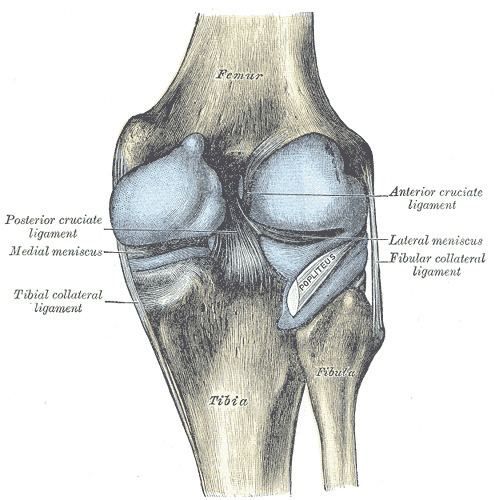Artery Popliteal artery | Nerve Tibial nerve | |
 | ||
Origin lateral femoral epicondyle Insertion posterior surface of tibia proximal to soleus line Actions Medially rotates tibia on the femur if the femur is fixed (sitting down) or laterally rotates femur on the tibia if tibia is fixed (standing up), unlocks the knee to allow flexion (bending), helps to prevent the forward dislocation of the femur while crouching Latin Musculus popliteus, poplit=ham (pit) of the knee | ||
The popliteus muscle in the leg is used for unlocking the knees when walking, by medially rotating the tibia during the closed chain portion of the gait cycle (one with the foot in contact with the ground). It is also used when sitting down and standing up. It is the only muscle in the posterior (back) compartment of the lower leg that acts just on the knee and not on the ankle. The gastrocnemius muscle acts on both joints.
Contents
Structure
It originates on the lateral femoral epicondyle. It then inserts on the posterior surface of the tibia, just proximal to the soleal line.
Innervation
Nerve supply is via the tibial nerve from spinal roots L5 and S1.
Variation
There is sometimes an additional head from the sesamoid bone in the lateral (outer) head of the gastrocnemius muscle.
Rarely an additional inconstant muscle; the popliteus minor is seen. It originates from the femur on the inner side of the plantaris muscle and inserts into the posterior ligament of the knee-joint.
Peroneotibialis, 14% of population. Origin is inner side of the head of the fibula, insertion into the upper end of the oblique line of the tibia, it lies beneath the popliteus.
Another variant, the cyamella, is a small sesamoid bone embedded in the tendon of the popliteus muscle. It is rarely seen in humans, but has been described more often in other primates and certain other animals.
Function
The popliteus assists in flexing the leg upon the thigh; when the leg is flexed, it will rotate the tibia inward.
It is especially called into action at the beginning of the act of bending the knee, inasmuch as it produces the slight inward rotation of the tibia, which is essential in the early stage of this movement.
When the knee is in full extension, the femur slightly medially rotates on the tibia to lock the knee joint in place. Popliteus is often referred to as the "Key" to unlocking the knee since it begins knee flexion by laterally rotating the femur on the tibia.
Popliteus is also attached to the lateral meniscus in the knee and draws it posteriorly during knee flexion to prevent crushing the meniscus between the tibia and femur as the knee flexes.
Trigger points
A popliteus shortened by trigger points can cause pain near its tendinous origin at the lateral knee.
